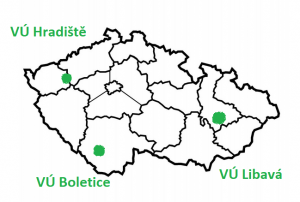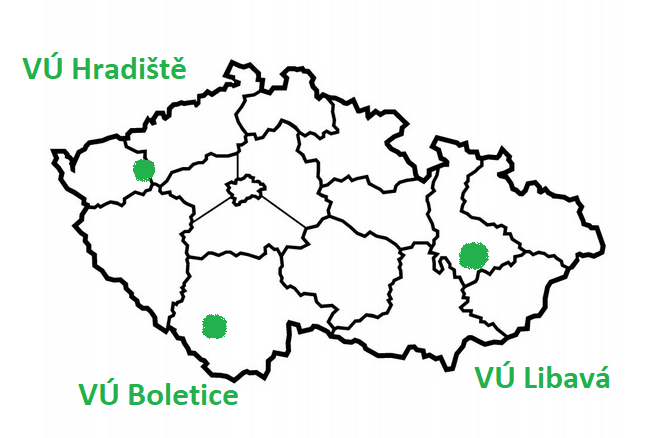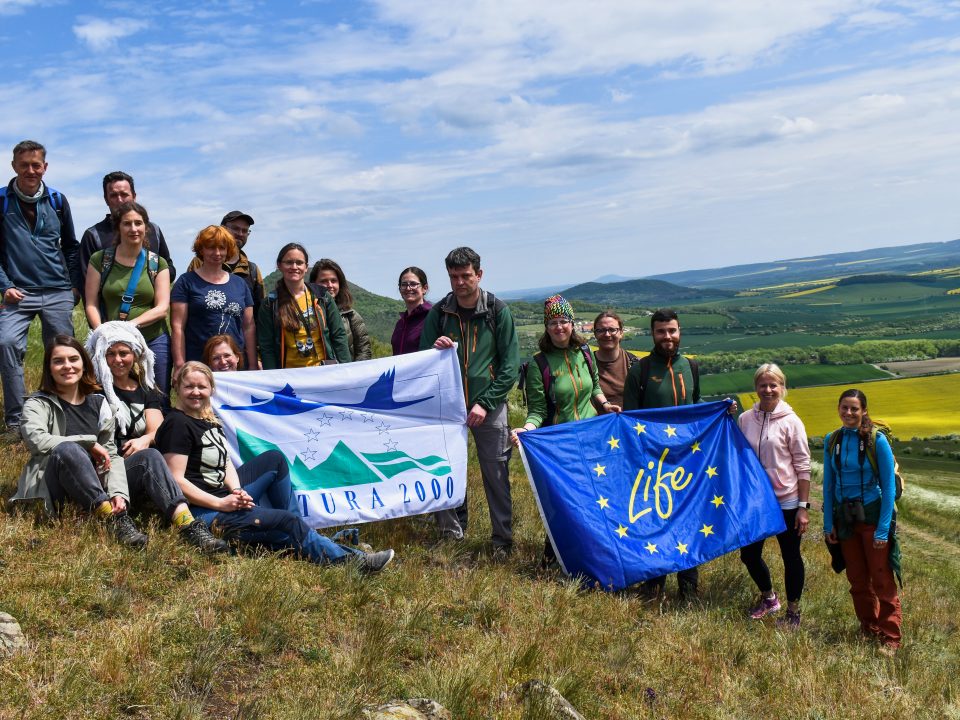WHO MANAGES NATURA 2000: Military district administrations
Military district administrations are one of the five nature protection authorities (NPAs) that have a lawful duty to manage the Natura 2000 system wherever the system overlaps with the territory of the military district. If we take into account the area of all the special areas of conservation (SACs) and special protection areas (SPAs), the military district administrations manage 8% of the Natura 2000 area in the Czech Republic. The Act on the provision of defence of the Czech Republic (No. 222/1999 Coll.) defines military districts as a defined part of the state´s territory intended for the national defence – is the defence of the state as well as of nature being ensured here? In this article, we will present what is protected in the various military districts and the role of the district administrations. However, if we talk about the importance of military districts for nature conservation, it is necessary to focus on the specific regime which prevails in the territory and which is also essential for nature conservation. This will be the subject of the next article.
Prohibition of entry, prohibition to register for permanent residence, prohibition of building except in the public interest – these are the conditions that prevail in military districts. At the same time, these are also conditions that ensure the interests of nature conservation. This is also why closed military districts can often become specially protected areas, as was the case, for example, in 2016, when the 26th Protected Landscape Area (Brdy) was established on the basis of the cancelled Brdy Military District. It is particularly important for its valuable forest cover, but also wetlands, meadows and heathland.
The state administration in nature and landscape protection is carried out in the territory of military districts within the scope of the municipal authorities, delegated municipal authorities, municipalities with extended competence, regional authorities, the Nature Conservation Agency and national park administrations, unless the Ministry of Defence is responsible for the administration. On the territory of the military districts, the Ministry of Defence ensures and approves the management plans for nature reserves and natural monuments, ensures their implementation, cooperates with other authorities in providing environmental education, performs state supervision or issues statements on land-use planning documentation, and finally negotiates contracts for the protection of the territory. The military district administrations are subordinate to the Ministry of Defence, and the expenses for their activities (including management of sites) are covered by the Ministry’s budget.
Contractual protection of SACs is one of three ways of ensuring the protection of SACs and it is applied as an alternative to the designation of small areas under special protection (Czech legislation). It involves the conclusion of a contract between the responsible NPA and the owner of the land on which the SAC is located. Such a contract can only be concluded for sites that are not specially protected (e.g. as national nature reserves, national nature monuments, etc.). The contract defines the protection conditions as well as the management method for the protected area. Such protection is then reflected in the cadastre as an easement on the land. The other two ways of ensuring the protection of a SAC are the designation of the SAC in the category of a specially protected area which is proposed for the SAC in the national list. Finally, the third option is the institute of so-called basic protection.
There are currently four military districts in the Czech Republic, the smallest of which, the district of Březina, does not overlap with the Natura 2000 system. The remaining three are in the overlap with SACs or SPAs and at the same time the protection of the SAC is ensured contractually on their territory.

Military districts whose administrations are nature protection authorities for the Natura 2000 network.
The largest military district is the Hradiště Military District (an area of 28,000 ha), located northeast of Karlovy Vary. There is an overlap with the Doupovské hory SPA and Hradiště SAC, and the part of the Hradiště SAC that is located within the territory of the Hradiště Military District is protected by contract. The target features in the SAC are natural habitats, such as lowland hay meadows, siliceous rock with pioneer vegetation, natural eutrophic lakes, Euro-Siberian steppic woods with Quercus spp., or alluvial forests with alnus glutinosa and fraxinus excelsior.
Among the species protected here are, for example, northern crested newt (Triturus cristatus), Atlantic salmon (Salmo salar), and dusky large blue (Maculinea nausithous). The specific management principles set out in the contract apply to both forest and non-forest areas.
The second largest district is the Libavá Military District (an area of 22,700 ha), located northeast of Olomouc. The territory overlaps with the Libavá SPA and the Libavá SAC, and contractual protection has been established for the protection of the part of the SAC that is located in the territory of the military district. The target features are natural habitats (e.g. molinia meadows, transition mires and quaking bogs, beech forests, etc.) and specific species such as the Carabus variolosus or European bullhead (Cottus gobio). The management principles are again defined in the contract for both forest and non-forest areas.
The last district is the Boletice Military District (an area of 16,500 ha), which is located west of Český Krumlov. It overlaps with the Boletice SAC and the Boletice SPA. The concluded contract on the protection of the area refers to the part of the Boletice SAC located in the territory of the Boletice Military District (outside the Šumava Protected Landscape Area). The natural habitats protected here include, for example, hydrophilous tall herb fringe communities, transition mires and quaking bogs, and species-rich Nardus grasslands. Protected species include Eurasian lynx (Lynx lynx), scarce large blue (Maculines teleius) and freshwater pearl mussel (Margaritifera margaritifera).








